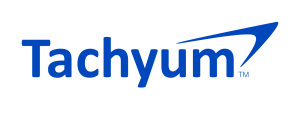Slovakia as a Digital Tiger in 10 Years - Reality or Fiction?

Slovakia as a Top Digital Country? A country where cities will be full of smart scanners, where cars will be autonomous and where public intelligence will be operated by artificial intelligence? A country that will become the digital tiger of Europe within ten years? Is it even possible? This goal was approved by the Slovak government a few days ago.
We do not set this goal because it is easy, but because it is difficult. This paraphrase of Kennedy's reasoning for going to the moon was adopted by creators of the Digital Transformation Strategies. The draft of the project immediately sparked a vivid discussion and a few controversies even. Compared to those optimistic ones, sceptics raise a question if such goal is feasible.
Does Slovakia have the human capacity to become a digitalization leader in a first place? At times of desperate need for programmers, considering the ambiguity of similar attempts to build eGovernment over the past 15 years, some could ask: Why not focus on taking over what has already been tested?
Nevertheless, no goal can be achieved without setting it up first. If we won’t aim high, Slovakia will never be more than a provincial country that forces the best brains to leave. It is, therefore, necessary to set the goals which can excite us, mobilize us, and motivate experts to stay.
Richard Raši, the Deputy prime minister of the Slovak Republic for Investments and Informatization, emphasizes that Slovakia is one of the first countries in Europe to come up with such a comprehensive digital transformation strategy. “We have to prepare Slovakia for a full-scale digital transformation. This will serve as a necessary impetus for initiating the development of the information society and transforming the traditional industry into an intelligent industry, including the development of artificial intelligence,” said Raši.
The IT Association of Slovakia (ITAS), as the largest Slovak professional association of the most important domestic and foreign companies active in the field of information and communication technologies, had a more reserved approach. Its material preparation experts actively participated in and commented on several important areas. As they acknowledged, they wished to see the real outcome of the theoretical framework. Opponents are concerned that the Slovak Digital Transformation Strategy 2030 is a long-haul run and can eventually end up "in the trash" as some other Slovak projects planned in a similar timeframe.
The text identifies several technological challenges that Slovakia will face in the near future - the use of artificial intelligence, digital innovation hubs or activities aimed at the development of digital skills.
Education is also part of this digital transformation and one of the areas of concern in this aspect. According to the resolution, the Deputy Prime Minister and other ministers and directors should prepare a comprehensive Action Plan on Digital Transformation of Slovakia 2019 to 2022, relating to schools and education, by 31 June this year.
Slovakia has been inspired by developed countries such as France, Finland, Great Britain and Singapore to create digital transformation. Therefore, to evaluate this project and its feasibility at this stage would be precocious. Digital transformation is important because of the fact that more than 50% of Europe online turnover is realized by American companies. Furthermore, digital economy is becoming part of an increasing number of markets.
Spring ITAPA 2019 is one of the first opportunities where Richard Raši, as Deputy Prime Minister for Investment and Informatisation, will be able to present an ambitious digital transformation project of 2030. Subsequently, the entire section will be devoted to discussions where both authors and opponents will express their perspectives.




















